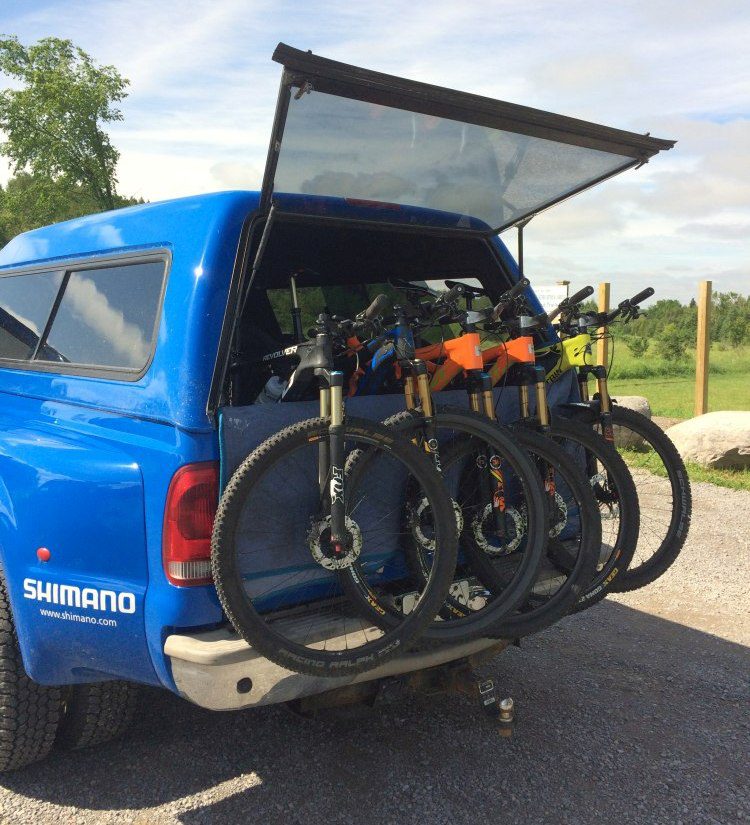First ride on the Shimano XTR Di2 group
I think the Shimano XTR Di2 groupset is one of the greatest developments to happen to the mountain bike, so far. I first saw the electronic gruppo in July 2014 at the BC Bike Race.


I think the Shimano XTR Di2 groupset is one of the greatest developments to happen to the mountain bike, so far. I first saw the electronic gruppo in July 2014 at the BC Bike Race. Shimano had brought Paul Thomasberg—long time Skunk Development team member, former pro racer and MTB hall of fame alumnus—to the event. (If you haven’t heard his name before, look him up and see how important he has been to the sport of mountain biking.) He raced and won his category on a nearly production-ready, prototype version of the groupset. He generally let me, and anyone else for that matter, take a quick spin to check out the technology firsthand. His feedback, along with data downloaded to his laptop from the Di2 system, was sent almost daily to the designers back at Shimano Japan to help further refine the performance as well as the ergonomics.
Earlier this month, when I had a chance to ride the XTR Di2 once again, I realized I had forgotten how incredible it was. Shimano Canada took a group of riders out on great local trails in Peterborough, Ont., to check out the groupset. After a couple of rainy weeks, which even caused this test day to be postponed, we set out on our bikes in some not-muddy but ultra-slick trail conditions. With the XTR’s servo motors firing and and its microprocessors constantly offering up the most efficient gear choice, the groupset took the riding experience up more than just a notch. The on-trail performance exceeded my expectations with instant shifts even as I tried to shift later than I would normally on a traditional system. After the ride, I I found myself re-evaluating my personal drivetrain setup. I suspect that the other testers might be less than enthusiastic about going back to riding their now seemingly primitive drivetrain.
I recently switched my personal trail bike to a 30-tooth single ring, trying to find a happy middle ground between my 36-tooth big ring and my 24-tooth small ring. My intention was to gear the bike for steeper climbs even if I had to sacrifice some top speed on fast, open terrain, while still keeping a smoothly spaced cassette (11-36). I cross chained too often climbing in the 36-tooth ring and then downshifting to the small ring. Then, I’d have to upshift to a harder gear right away in the rear to maintain a comfortable cadence and some momentum. The synchro modes on the XTR Di2 do this all this shifting automatically, ensuring an average gear ratio change of roughly 13 per cent, all while keeping a more ideal chain line. With this system there is no need to compromise. You can have a wide selection of gear ratios delivered at the optimum rate to match your pedalling speed. Along with that, you have the ability to control both derailleurs with just one shifter while using the two synchro modes. Each mode can be set up differently depending on the terrain or how strong you are at the beginning versus the end of a ride. Also, the shift paddles can be programmed in a variety of ways, allowing the setup to be completely personal. You can integrate Fox’s iCD electronic lockout system so that your current lockout setting is shown on the Di2 display screen and runs off the Di2 battery.
There is a 1×11 option forgoing the front derailleur and one shifter. It would still perform well, but most of the benefits described previously would be lost. With a front and rear derailleur that shift simultaneously to find just the right gear with only one or two clicks of the shifter, why not take the expanded gear range option?
Unlike the road Di2 groupsets, the MTB shifters are designed to feel just like a mechanical shifter but with the same capability to go through all 11 cogs at once by holding each shift paddle down. Also similar to the road gruppo, the 2-by system will self trim the front derailleur to eliminate chain rub.
The bad news for some is there is no word on a lower-level Di2 off-road group coming to market any time soon. But the good news is there are top end bikes out there already coming Di2 equipped. Shimano is filling orders for aftermarket sales for your existing bike or a new custom build you have in the works. Here is a breakdown of prices for components:
| Shimano XTR Di2 component | Price |
|---|---|
| Front shifter (SW M9050) | $275 |
| Rear shifter (SW M9050) | $275 |
| Front derailleur FD M9070) | $475 |
| Rear derailleur (RD M9050) | $700 |
| Junction box (SC M9050) | $160 |
| Race crank (FC M9000) | Starting at $665 |
| Trail crank (FC M9020) | Starting at $665 |
| Racing tubulars wheels (WH M9000) | $3,500 |
| Racing clinchers wheels (WH 9000) | $1,600 |
| Trail clinchers wheels (WH 9020) | $1,600 |
| Pedals (PD M9000) | $200 |
| Pedals (PD M9020) | $200 |



